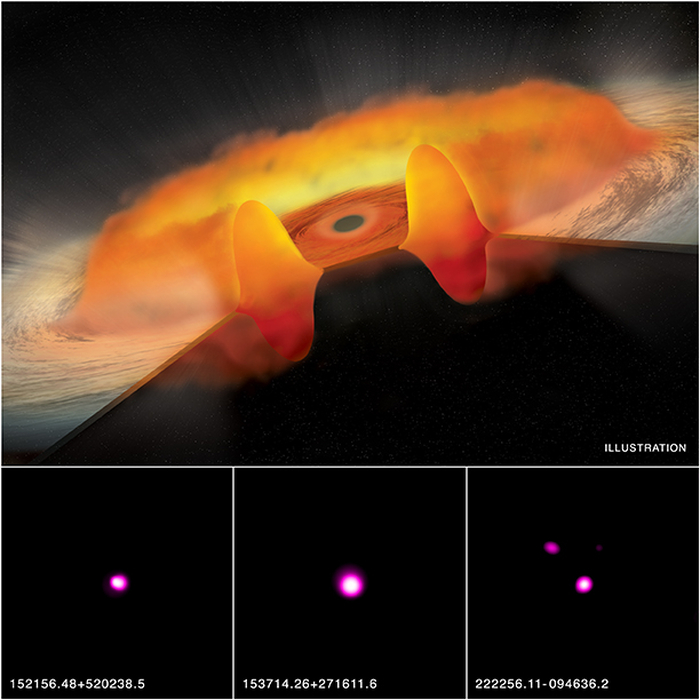
 Credit: X-ray: NASA/CXC/Penn State/B.Luo et al.; Illustration: NASA/CXC/M.Weiss
Credit: X-ray: NASA/CXC/Penn State/B.Luo et al.; Illustration: NASA/CXC/M.Weiss
Time to Make the Donut?
Sometimes what you don't see is as important as what you do see. For example, some luminous active galaxies show very little X-ray emission. These active galaxies, called quasars, show bright optical and radio emission from their centers. This emission arises from material spiralling into a supermassive black hole which resides at the center of the quasar. As gas spirals down into the supermassive black hole, frictional heating causes the gas to reach temperatures of millions of degrees, and this superhot gas will emit high-temperature X-ray emission. So quasars which show little X-ray emission present astronomers with a puzzle. But a new study of X-ray emission from 51 X-ray weak quasars with the Chandra X-ray Observatory may help solve this puzzle. Analysis of the weak X-ray emission with Chandra's sensitive X-ray detectors suggest that these X-ray weak galaxies may actually have black holes which are accreting gas at very high rates. As material spirals into the black hole, it forms a disk around the black hole. But if the black hole is accreting a very large amount of matter, the energy generated by this rapid accretion may "puff up" the accretion disk into a donut-shaped torus of "shielding gas" which is thick enough to block the X-ray emission near the black hole, as shown in the illustration above. If this scenario is right, it means that the central black holes in these X-ray weak galaxies are actually growing at an extraordinary rate.
Published: May 25, 2015
<
HEA Dictionary ● Archive
● Search HEAPOW
● Other Languages
● HEAPOW on Facebook
● Download all Images
● Education ● HEAD
>

Each week the HEASARC
brings you new, exciting and beautiful images from X-ray and Gamma ray
astronomy. Check back each week and be sure to check out the HEAPOW archive!
Page Author: Dr. Michael F. Corcoran
Last modified Monday, 26-Feb-2024 17:11:25 EST


